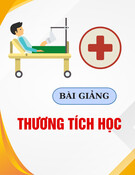
Can Tho Journal of Medicine and Pharmacy 9(5) (2023)
64
3. Abouleish AE, Vinta SR, Shabot SM, et al (2020). Improving agreement of ASA physical status
class between pre-anesthesia screening and day of surgery by adding institutional-specific and
ASA-approved examples: a quality improvement project. Perioperative Medicine (2020); 9(1):34
4. Irita K, Kawashima Y, Tsuzaki K, et al (2002). Perioperative mortality and morbidity in the year
2000 in 502 Japanese certified anesthesia-training hospitals: with a special reference to ASA-
physical status--report of the Japan Society of Anesthesiologists Committee on Operating Room
Safety. Masui 2002; 51(1):71-85.
5. Miller RD (2019), Miller's Anesthesia, ninth edition. Vol. 1,2: Elsevier.
6. American Diabetes Association (2021), Classification and Diagnosis of Diabetes: Standards of
Medical Care in Diabetes-2021. Diabetes Care, 44 (Suppl 1): S15-S33.
7. James PA, Oparil S, Carter BL, et al. (2014), Evidence-Based Guideline for the Management of
High Blood Pressure in Adults: Report from the Panel Members Appointed to the Eighth Joint
National Committee (JNC 8). JAMA, 311(5):507-520.
(Received: 04/01/2023 – Accepted: 01/3/2023)
SOME FACTORS RELATED TO THE DURATION OF INPATIENTS
TREATMENT OF HERPES ZOSTER BY HE-NE LASER THERAPY
AT CAN THO DERMATO-VENEREOLOGY HOSPITAL
Ha Thi Thao Mai2, Pham Qui Ngoc1, Huynh Van Ba2, Dang Dinh Hoa Quy3,
Nguyen Hong Ngan2*, Trang Gia Vinh2, Nguyen Lam Duy2
1. Public health station of Phung Hiep district, Hau Giang province
2. Can Tho University of Medicine and Pharmacy
3. Nam Binh Thuan General Hospital
*Corresponding author: nhngan.dongthap@gmail.com
ABSTRACT
Background: Shingles is caused by the Varicella-Zoster virus. The duration of
hospitalization prolong will increase the risk of superinfection, costs for treatment, and quality of
life. Objectives: (1) To describe clinical manifestations of herpes zoster inpatients at Can
Tho Dermato-Venereology Hospital. (2) To survey some related factors related to the duration of
hospitalization of herpes zoster by He-Ne laser therapy at Can Tho Dermato-Venereology Hospital.
Materials and methods: the cross-sectional study on all shingles patients admitted to Can
Tho Dermato-Venereology Hospital during the study period. Results: The proportion of group
patients >60 years old was 54.9% higher than the group of patients ≤60 with 45.1%. Most shingles
patients had secondary school degrees with 69%. The rate of patients admitted to the hospital early
≤5 days after symptom onset was 72.6%. Patients hospitalized for ≤7 days accounted for 77%.
Patients with mild illness had the highest rate with 58.4%, and the rate of medium and severe illness
with 36.3% and 5.3% respectively. Most patients had superinfection with 72.6%. The group of
patients admitted to the hospital early ≤5 days had a shorter duration of hospitalization than the
group of patients admitted to the hospital late after 5 days. In the patient's group with superinfection
and more severe disease, the duration of hospitalization was longer than in the patient’s group
without superinfection and the severity of the disease was milder. All differences were statistically
significant, p<0.05. Conclusion: Early treatment with He-Ne laser therapy helps to improve the
severity of the disease and the state of superinfection and shorten the patient's hospital stay.
Keywords: duration of hospitalization, herpes zoster, He-Ne laser, related factors.






























